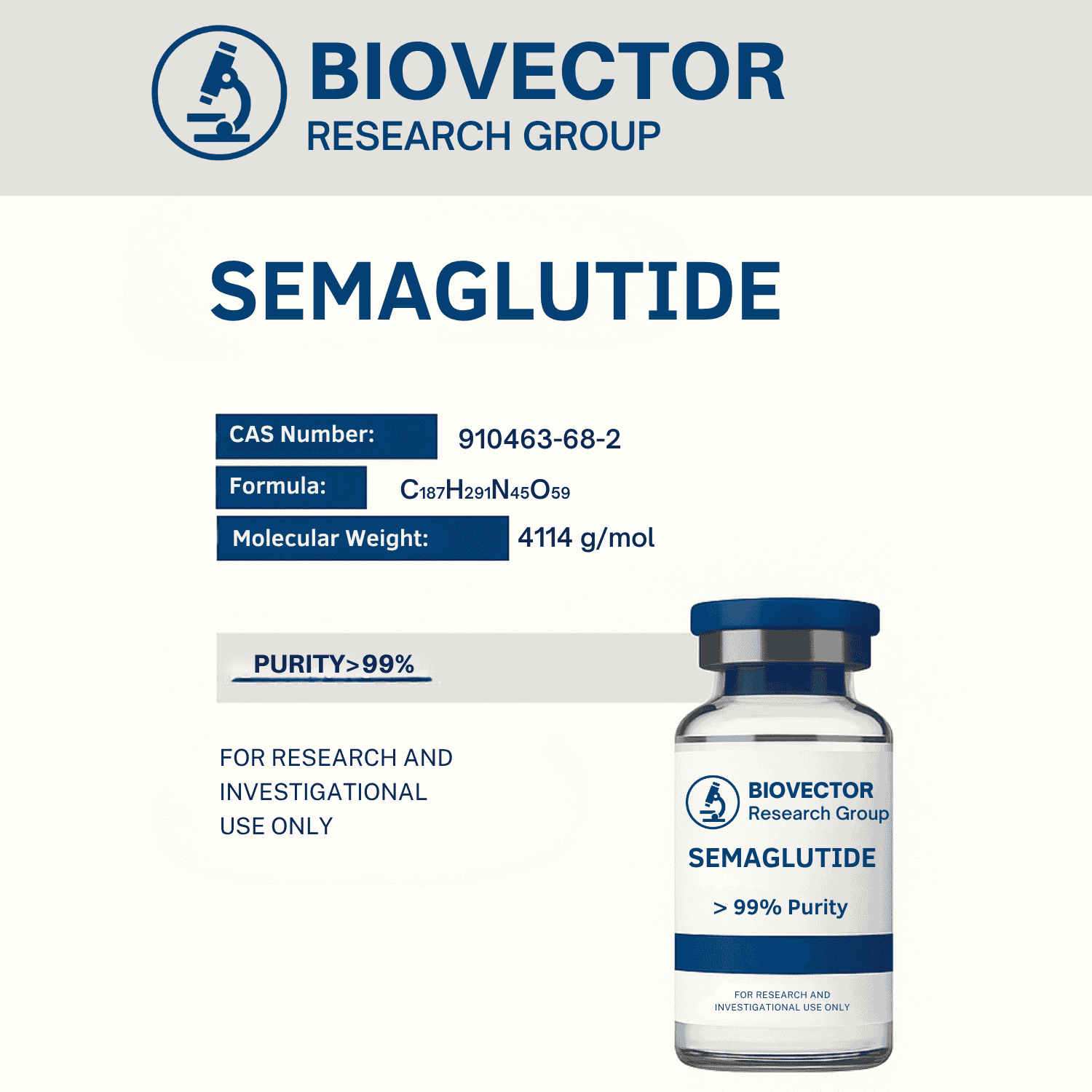Semaglutide Research Overview — GLP-1 Peptide Mechanism and Findings
Disclaimer: This article is intended solely for laboratory and educational discussion. Semaglutide is supplied for research use only and is not approved for theraputic, veterinary, or diagnostic purposes. Semaglutide is a synthetic peptide analog of human glucagon-like peptide-1 (GLP-1) designed to activate the GLP-1 receptor with extended half-life stability. It consists of 31 amino acids with modifications that resist degradation by dipeptidyl peptidase-4 (DPP-4), enabling a prolonged duration of receptor activity. (PubChem) Preclinical and clinical research demonstrates that semaglutide effectively modulates glucose metabolism and appetite regulation via GLP-1 receptor agonism. In controlled studies (e.g., SUSTAIN trials), semaglutide has shown significant improvements in glycemic control and body mass parameters when compared to placebo and other GLP-1 analogs. (PubMed Review) (NIH/PMC Summary) Recent mechanistic studies emphasize semaglutide’s structural stability and receptor-binding affinity, making it a reference compound in GLP-1 research. Investigations continue into how its peptide modifications enhance pharmacokinetics and downstream signaling compared to earlier GLP-1 analogs. (NCBI Pharmacology Study)Key References
- PubChem Compound Summary — pubchem.ncbi.nlm.nih.gov/compound/Semaglutide
- Clinical Review: SUSTAIN Trials Overview — pubmed.ncbi.nlm.nih.gov/35344552
- GLP-1 Receptor Mechanism Review — pmc.ncbi.nlm.nih.gov/articles/PMC9516308
- Semaglutide Structural Pharmacology — pubmed.ncbi.nlm.nih.gov/31489631
BioVector Research Group provides Semaglutide for controlled laboratory and research purposes only. Not for human consumption or clinical application.


